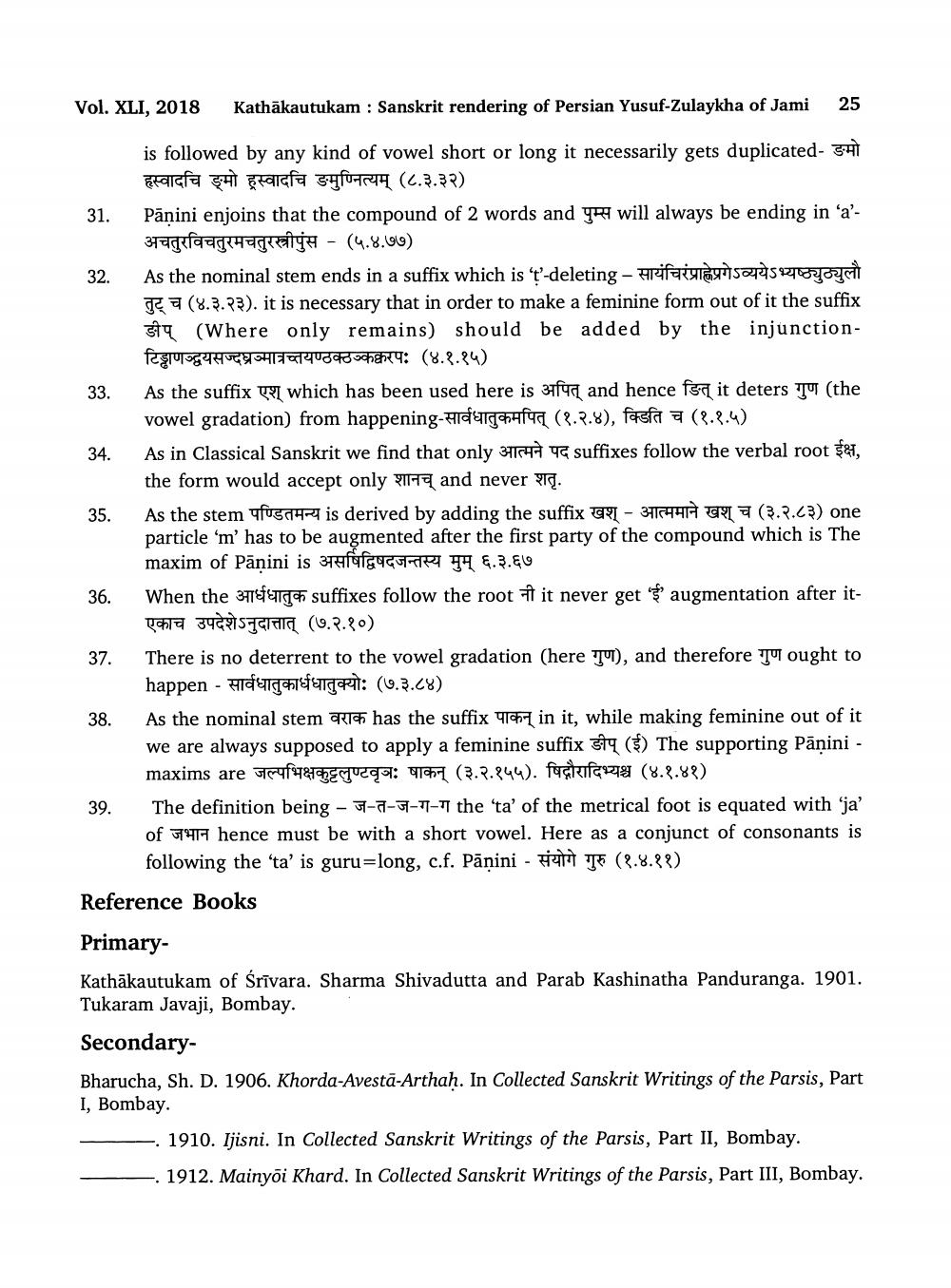________________
Vol. XLI, 2018
Kathakautukam : Sanskrit rendering of Persian Yusuf-Zulaykha of Jami
25
is followed by any kind of vowel short or long it necessarily gets duplicated- 5:41 हस्वादचि ङ्मो हुस्वादचि ङमुनित्यम् (८.३.३२) Pānini enjoins that the compound of 2 words and yet will always be ending in ‘a’37agkauge ja - (4.8.09) As the nominal stem ends in a suffix which is 't'-deleting - rifaiye s o T2 (8.3.23). it is necessary that in order to make a feminine form out of it the suffix shq (Where only remains) should be added by the injunction
टिड्डाणद्धयसज्दघ्रज्मात्रन्तयण्ठक्ठकक्चरपः (४.१.१५) 33. As the suffix yol which has been used here is 37196 and hence for it deters Tu (the
vowel gradation) from happening- HIDECHCL (.7.8), fasta a (8.8.4) As in Classical Sanskrit we find that only 311649 suffixes follow the verbal root $4, the form would accept only शानच् and never शतृ. As the stem ufugam is derived by adding the suffix CI - 311646 02 (3..C3) one particle 'm' has to be augmented after the first party of the compound which is The
maxim of Panini is 3 to 44 .3.86 6. When the 377furich suffixes follow the root it never get augmentation after it
ale 3469STGIOC (.7.80) There is no deterrent to the vowel gradation (here Tu), and therefore Tu ought to happen - Arducchefegori: (9.3.28) As the nominal stem Rich has the suffix 407 in it, while making feminine out of it we are always supposed to apply a feminine suffix shq ($) The supporting Pāṇini -
maxims are oft &quqs: 012077 (3.7.844). fucrifaza (8.8.8%) 39. The definition being - 57-7-37-17-the 'ta' of the metrical foot is equated with 'ja'
of 377 hence must be with a short vowel. Here as a conjunct of consonants is
following the 'ta’ is gururlong, c.f. Pāṇini - TS (2.8.38) Reference Books
Primary
Kathākautukam of Śrīvara. Sharma Shivadutta and Parab Kashinatha Panduranga. 1901. Tukaram Javaji, Bombay. SecondaryBharucha, Sh. D. 1906. Khorda-Avestā-Arthaḥ. In Collected Sanskrit Writings of the Parsis, Part I, Bombay.
- 1910. Ijisni. In Collected Sanskrit Writings of the Parsis, Part II, Bombay. - 1912. Mainyõi Khard. In Collected Sanskrit Writings of the Parsis, Part III, Bombay.




